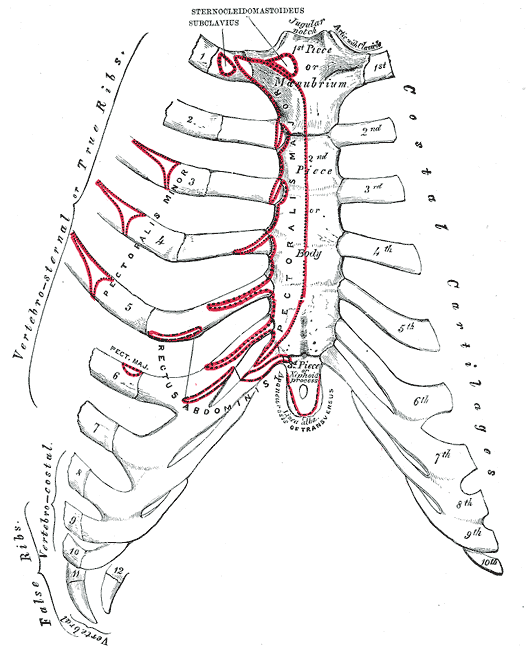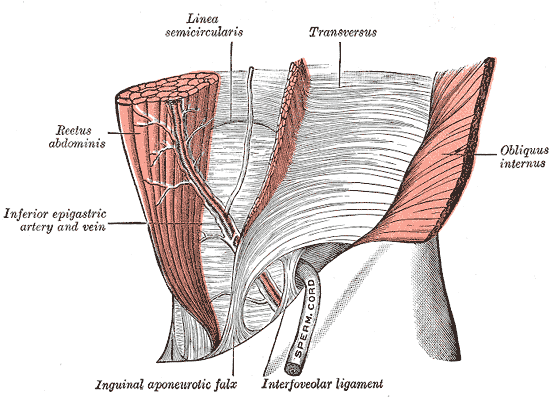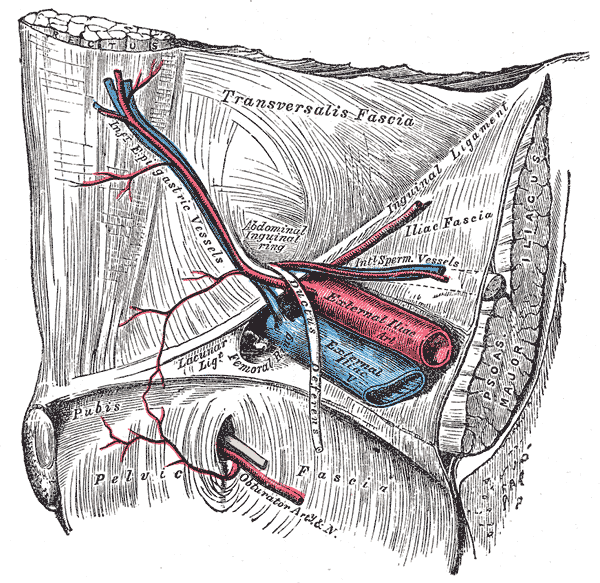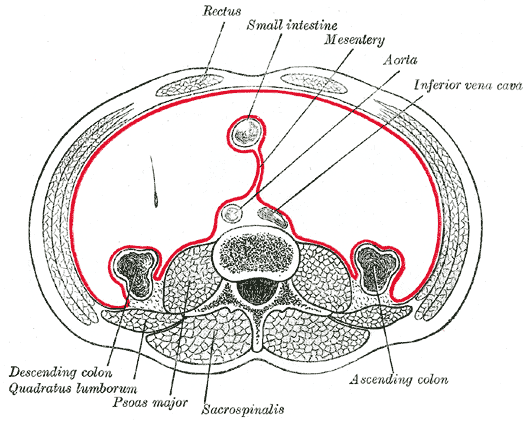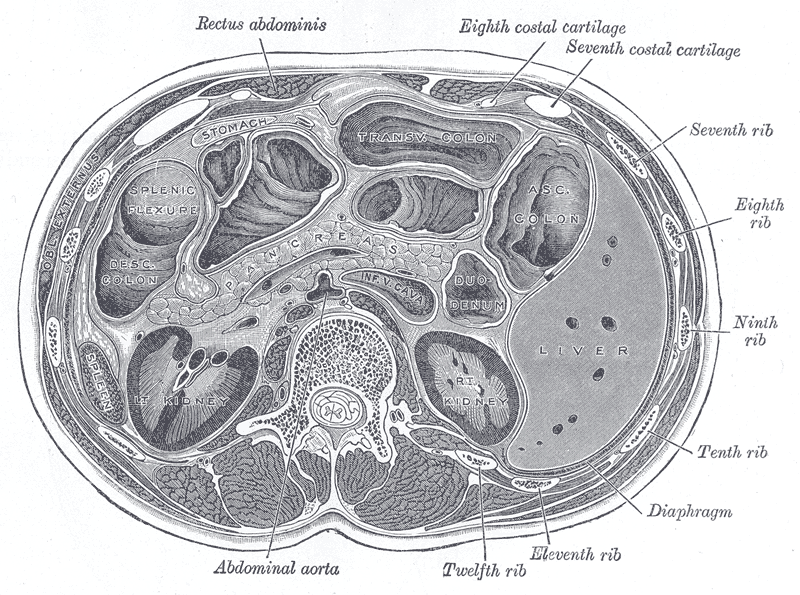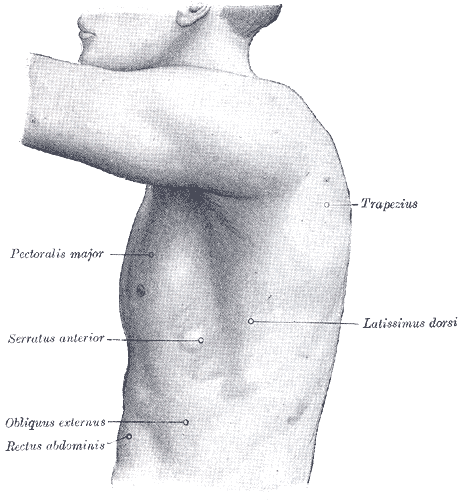Rectus abdominis muscle: Difference between revisions
m (Robot: Automated text replacement (-{{SIB}} +, -{{EH}} +, -{{EJ}} +, -{{Editor Help}} +, -{{Editor Join}} +)) |
|||
| Line 20: | Line 20: | ||
{{CMG}} | {{CMG}} | ||
==Overview== | ==Overview== | ||
| Line 89: | Line 89: | ||
{{Muscles of trunk}} | {{Muscles of trunk}} | ||
[[Category:Muscles of the trunk]] | [[Category:Muscles of the trunk]] | ||
Latest revision as of 15:35, 20 August 2012
Editor-In-Chief: C. Michael Gibson, M.S., M.D. [1]
Overview
The rectus abdominis muscle (commonly known as "abs") is a paired muscle running vertically on each side of the anterior wall of the human abdomen (and in some other animals). There are two parallel muscles, separated by a band of connective tissue called the linea alba (white line). It extends from the pubic symphysis inferiorly to the xiphisternum and lower costal cartilages superiorly.
It is contained in the Rectus sheath.
The Rectus is crossed by fibrous bands, three in number, which are named the tendinous inscriptions. If well-defined, the rectus abdominis is colloquially called a "six pack".
Function
The rectus abdominis is a key postural muscle. It is responsible for flexing the lumbar spine, as when doing a 'sit-up'. The rectus abdominis can play a role in respiration in the event the patient is short of breath.
Blood supply
A Mathes and Nahai Type III muscle (2 dominant pedicles)
1 - The inferior epigastric artery and vein (or veins) run superiorly on the posterior surface of the rectus abdominis, enter the rectus fascia at the arcuate line, and help to supply the muscle with blood.
2 - superior epigastric artery ( a terminal branch of the internal mammary)
Also has small segmental contribution from lower 6 intercostal arteries
Location
The Rectus abdominis is a long flat muscle, which extends along the whole length of the front of the abdomen, and is separated from its fellow of the opposite side by the linea alba.
It is much broader, but thinner, above than below, and arises by two tendons;
- the lateral or larger is attached to the crest of the pubis,
- the medial interlaces with its fellow of the opposite side, and is connected with the ligaments covering the front of the symphysis pubis.
The muscle is inserted by three portions of unequal size into the cartilages of the fifth, sixth, and seventh ribs.
The upper portion, attached principally to the cartilage of the fifth rib, usually has some fibers of insertion into the anterior extremity of the rib itself.
Some fibers are occasionally connected with the costoxiphoid ligaments, and the side of the xiphoid process.
Animals
The Rectus Abdominis is similar in most vertebrates. The most obvious difference between animal and human abdominal musculature is that in animals, there are a different number of tendinous intersections.
Additional images
-
Anterior surface of sternum and costal cartilages.
-
The interfoveolar ligament, seen from in front.
-
Diagram of sheath of Rectus.
-
Diagram of a transverse section through the anterior abdomina wall, below the linea semicircularis.
-
The relations of the femoral and abdominal inguinal rings, seen from within the abdomen. Right side.
-
Horizontal disposition of the peritoneum in the lower part of the abdomen.
-
Transverse section through the middle of the first lumbar vertebra, showing the relations of the pancreas.
-
The left side of the thorax.
-
Surface anatomy of the front of the thorax and abdomen.
-
Muscles of the trunk
-
A man showing a large six-pack
External links
- Template:MuscleLoyola
- Template:GPnotebook
- Template:SUNYAnatomyFigs - "Muscles of the anterior chest wall with the pectoralis major muscles removed."
- Template:SUNYAnatomyLabs - "Thoracic Wall: The Anterior Thoracic Wall"
- Template:SUNYAnatomyFigs - "Incision and reflection of the external abdominal oblique muscle."
- Template:SUNYAnatomyFigs - "Incision and reflection of the internal abdominal oblique muscle."
- Template:SUNYAnatomyLabs - "Anterior Abdominal Wall: The Rectus Abdominis Muscle"
- Template:ViennaCrossSection
- Template:EMedicineDictionary
- Template:RocheLexicon
- Radiography at kumc.edu
Template:WH Template:WS fi:Vatsalihakset#Suorat vatsalihakset
